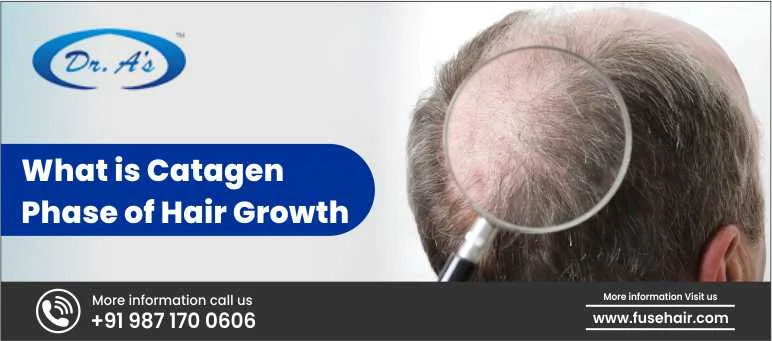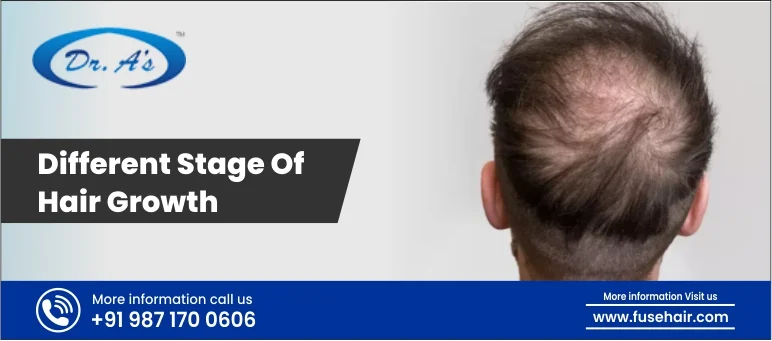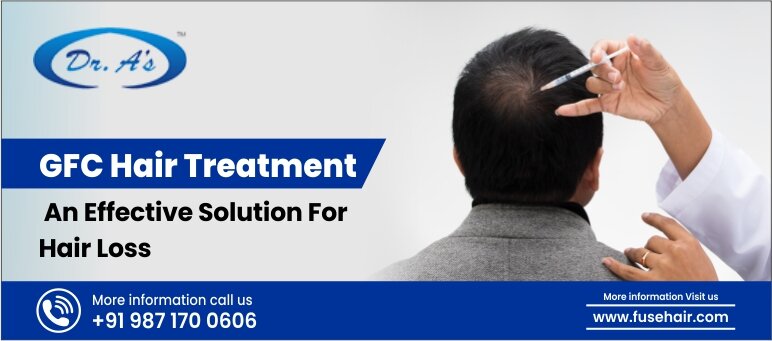
Hair development occurs at different stages that help in effective hair growth. The growth occurs in three specific phases, starting from Anagen, which then proceeds to Catagen, and finishes off with Telogen. The Catagen phase functions as a vital transitional phase where hair follicles minimize their size before disconnecting from the blood flow and proceeding to the following stage. This follicle shrinkage helps hair move to the next phase effortlessly, completing the cycle for optimum hair growth.
At Dr. A’s Clinic, we provide innovative hair restoration treatments that can help you develop your hair through every phase of the natural cycle.
Understanding the Hair Growth Cycle
The hair growth process includes three distinct phases, namely Anagen (growth), Catagen (transition), and Telogen (resting). Every stage actively establishes the final length and strength, contributing to the healthfulness of your hair. These stages combine their efforts to maintain healthy hair development. Hence, a disruption in any phase leads to excessive shedding or thinning of the hair.
-
Anagen Phase (Growth Phase)
Anagen is the active phase where hair follicles take their onion-like shape and spend the time producing the hair fiber. This stage can be subdivided into proanagen and metanagen phases. The most extended and active period lasts from 2 to 7 years. Hair follicles remain connected to the bloodstream during this phase, which permits hair growth at one centimeter per month. The duration of this phase sets the potential length of your hair.
-
Catagen Phase (Transition Phase)
During the Catagen phase, follicles detach from the bloodstream and stay between 2 and 3 weeks while transitioning from cellular growth to rest. The blood connection between hair follicles weakens, and they shrink away from the bloodstream, causing the cell production to cease. The brief yet essential Catagen phase helps restore healthy hair development and maintain it.
-
Telogen Phase (Resting Phase)
Known as the rest period, the telogen phase lasts between 3 and 4 months while being inactive. Old hairs stay inside the follicle until new growth forces their shedding. At each moment, your body comprises 10-15% of hair that exists in the resting stage.
What Happens in the Catagen Phase?
The Catagen phase is one of the essential phases in the hair growth cycle because it lasts the shortest time span. During this stage, hair cells stop their active growth to become ready for renewal. It is found that only 1% of your hair is in the catagen stage at any given moment. This may be a small number, but it is important to analyze the overall well-being of your hair.
Key Changes During the Catagen Phase
There are a large number of changes that take place during the development of hair at the catagen stage. The key changes include the following:
- Follicle Shrinkage: Hair follicle reduction starts when the dermal papilla ceases supplying vital nutrients to the hair root. This process marks the end of active hair growth (anagen phase).
- Keratinization Begins: Cuticle cells receive no more nutritional supply as the follicle stops working. They turn into a club hair, which remains fixed in the root, in its position, until it falls off on its own.
- Melanin Production Stops: The absence of nutrients to melanocytes (the cells that produce pigment) prevents new pigment creation, resulting in light-shaded hair at the ends.
Why is the Catagen Phase Important?
The Catagen phase represents the transitional phase between active growth (Anagen phase) and the shedding/rest stage (Telogen phase). During this time, hair follicles shrink, and the hair strand is removed from the follicle, preparing for shedding and renewal. During this time, old hairs are replaced by new healthy hair.
The Catagen phase is short but extremely important in balancing and preventing follicle overpopulation. If this stage did not occur, hair would keep growing and make strands weak and unhealthy, leading to an unhealthy scalp as well. Through advanced hair treatments, Dr. Arvind Poswal will help promote enhanced growth at each stage of your hair development cycle.
Duration and Factors Affecting the Catagen Phase
Although the Catagen phase usually extends between 2 and 3 weeks, individual factors may affect its length. The brief duration of this stage maintains crucial control for the hair to switch from an active growth state to a resting state. A hair cycle that spans either an extended period or remains too brief will damage your hair condition and result in hair loss or earlier-than-normal shedding.
Factors That Affect the Duration of the Catagen Phase:
Hair growth is affected in many ways and is influenced by multiple factors, as stated below:
- Age: The hair growth cycle tends to slow down as you age. Thus, the transition phase, Catagen, gets prolonged, leading to thinner hair or more shedding.
- Hormonal Changes: The Catagen phase can be affected by hormonal changes due to pregnancy, menopause, or thyroid imbalance. These alterations can prolong or shorten the phase, modifying hair density.
- Health Conditions: Certain health conditions like alopecia, scalp infections, or nutritional deficiencies can change the timing of the Catagen phase, leading to hair loss or slower regrowth.
- Medications and Stress: Hormones play an important role in hair growth, and any imbalance could be responsible for hair loss. Stress, specifically, can shove a large number of hair follicles forward in the growth cycle, causing them to enter the Catagen phase at the same time and eventually leading to telogen effluvium (temporary hair loss).
- Genetics: Your genetic composition affects the rate at which your hair goes through each phase of the growth cycle.
We at Dr. A’s Clinic analyze these factors to help you have greater control over your hair growth and support healthy hair development.
How Does the Catagen Phase Affect Hair Loss and Growth?
Hair loss, together with hair thinning, frequently occurs during the Catagen phase unless proper management techniques are followed. This intermediate transitional phase signals active hair growth to stop before follicles begin shedding and regenerating.
- Premature Transition: A premature entry into the Catagen phase by hair follicles potentially leads to Telogen phase activation, when follicles remain unprepared. Early hair shedding occurs due to this process, leading to potential thinning and loss of hair.
- Follicle Miniaturization: A shortened hair follicle size during the Catagen phase struggles to produce healthy hair strands. The strands that fall out will be replaced by thinner hair, which gets weaker before disappearing. The pattern of genetic hair loss, which causes male and female pattern baldness, appears in this scenario.
- Scalp Health: A diseased scalp disrupts the natural transition process of hair follicles during the Catagen phase. The natural process of the Catagen phase becomes unstable once follicle inflammation or clogging occurs, thereby causing increased hair shedding.
The Catagen phase exists as a natural cycle, but your scalp needs both wellness and proper maintenance during this period. At Dr. A’s Clinic, we hold the necessary expertise to help you maintain proper hair transitions, fostering growth and reducing shedding by promoting a good catagen process in your scalp.
Tips To Enhance the Process of Catagen Hair Growth
The natural hair growth cycle contains Catagen as its essential transition period; however, multiple interventions need to be made to support hair wellness throughout this phase. The strength of your hair follicles will improve the hair regeneration process to ensure better results. Here are some guidelines as suggested by Dr. Arvind Poswal to help you improve Catagen phase efficiency:
Maintain a Healthy Diet
A healthy diet rich in minerals and vitamins is important for your hair. Also, foods that are high in biotin, vitamin E, zinc, and iron are well-known to nourish hair follicles and lend themselves to the growth of hair. A balanced diet thus gives your body the nutrients it needs to maximize the Catagen phase.
Scalp Massage
Gentle massages stimulate the scalp as they circulate blood to the hair follicles. This, in turn, helps hair follicles improve the health of the scalp and facilitate seamless transition from the catagen phase or prepare follicles for their next stage of growth. Massage your scalp with natural oils, such as coconut oil or castor oil, to encourage follicle activity.
Avoid Excessive Heat and Chemicals
Overuse of heat styling tools and harsh chemicals leads to weakened hair, which has a greater propensity to shed during the Catagen stage. Use heat tools sparingly and opt for more gentle, natural hair care products to protect your strands.
Stress Management
Stress can drastically influence your hair cycle. Engaging in relaxation methods, such as meditation, yoga, or deep breathing, assists in reducing the stresses of life that may derail your hair growth cycle.
Conclusion
Catagen is an essential stage in the hair growth process, indicating the switch from active growth to a resting phase. By knowing and assisting this stage, you can limit hair loss and promote stronger, healthier hair. Whether it is for tailored tips or advanced hair loss treatments, Dr. A’s Clinic will help boost your hair’s catagen phase through its effective in-clinic procedures.





























